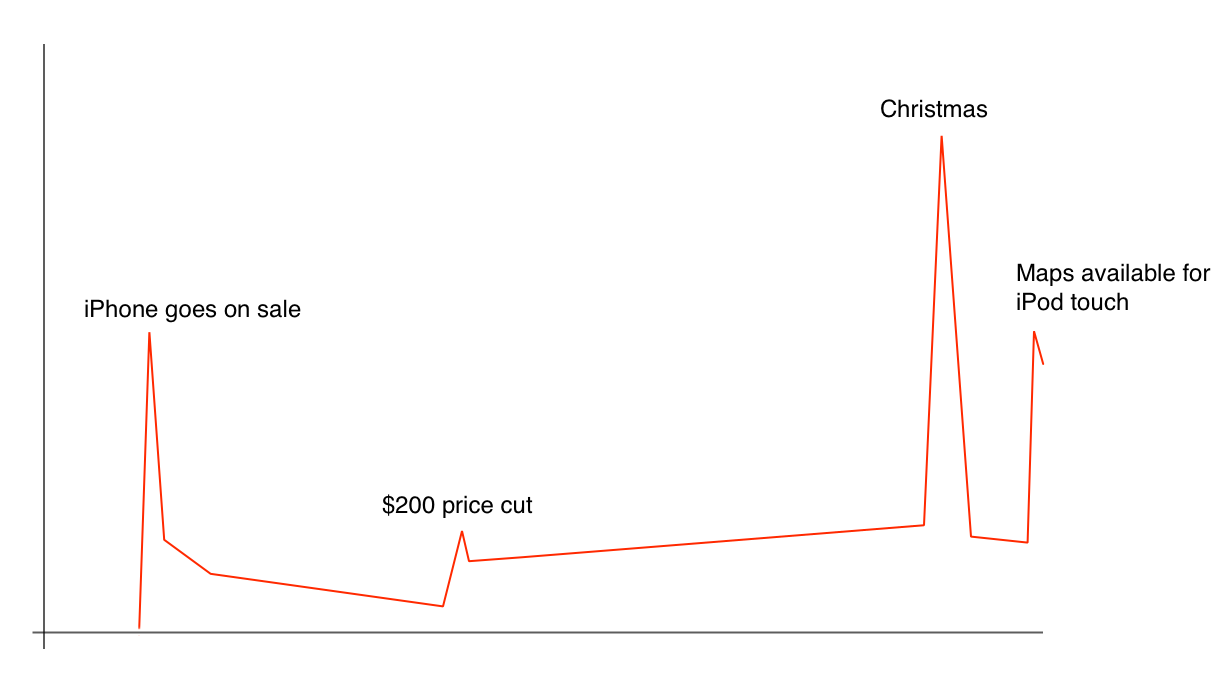How Well Did the Original iPhone Sell? #
At this year’s Code Conference Tim Cook discussed disagreements that he and Steve Jobs had, including whether to have a carrier subsidy for the iPhone:
Cook reveals him and Jobs disagreed over launching the iPhone as subsidized by the carrier or via receiving a carrier revenue share. He says this was their biggest debate. Jobs, of course, won with the original iPhone launching at $599. Cook got his wish the following year
— Mark Gurman (@markgurman) September 8, 2022
The iPhone launched in June 2007 with a $599 price at a time when most high-end phones sold for $199 (with a 2-year carrier contract). The iPhone got a $200 price cut in September, and the next year the iPhone 3G went on sale with a subsidized price of $199. The subsidized model continued for many years, until the entire industry moved away from it.
In retrospect it’s clear that Tim was right, but it would be interesting to know how the original iPhone sales were going — that (presumably) was one of the data points that Tim could use to get Jobs and Apple to change strategies. As it happens I accidentally stumbled on a proxy for such data in that time period, though I didn’t fully grasp its significance until later.
In early 2008 I was browsing around internal the set of internal Google Maps dashboards when I came across one for mobile clients. Google provided the maps data for the iPhone (through 2012’s iOS 6 release), and presumably the iPhone accessed this via the same API that Google's own apps used. By configuring the dashboard to display just new device IDs, it was possible to approximate iPhone sales (assuming that most users tried out the Maps app soon after purchase). Here’s my recollection of what that dashboard showed:

The downward trend after the initial launch was only reversed with the price cut, but even that did not result in a significantly higher plateau. It was also surprising that Christmas was a bigger spike than the initial launch. I also would have thought that the iPod touch spike would be higher (as an iPod touch user myself at the time, I was very excited to get access to Mail and Maps), but perhaps the $20 fee turned off more people.
The dashboard also shows that it was a different era in the Apple/Google relationship — Google had basically real-time visibility into how the iPhone was selling (as I recall the dashboard data was later locked down).
Post a Comment